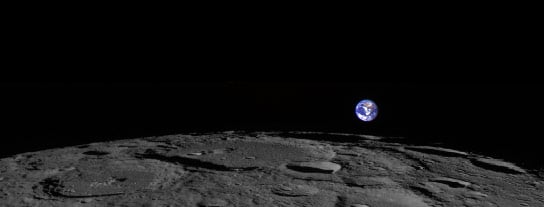
This image, captured February 1, 2014, shows a colorized view of Earth from the moon-based perspective of NASA’s Lunar Reconnaissance Orbiter. Credit: NASA/Goddard/Arizona State University
NASA’s Lunar Reconnaissance Orbiter captures a rare view of Earth from the moon.
NASA’s Lunar Reconnaissance Orbiter (LRO) experiences 12 “earthrises” every day, however, LROC (short for LRO Camera) is almost always busy imaging the lunar surface so only rarely does an opportunity arise such that LROC can capture a view of Earth. On February 1, 2014, LRO pitched forward while approaching the moon’s north pole allowing the LROC Wide Angle Camera to capture Earth rising above Rozhdestvenskiy crater (112 miles, or 180 km, in diameter).
The LROC WAC is very different than most digital cameras. Typically resolution is reported as the number of pixels in a single image; a cell phone camera today has more than 5 million pixels (5 megapixels). A single WAC frame has only 9,856 pixels, however, the WAC builds up a much larger image by exposing a series of images (or frames) as LRO progresses in its orbit; this type of imaging is called “push-frame.” Over a full month as the LRO orbit track progresses around the moon, the WAC builds up a collection of images that covers the entire globe.
Occasionally LRO points off into space to acquire observations of the moon’s exosphere and perform instrument calibration measurements. During these slews sometimes Earth (and other planets) pass through the WAC’s field of view and dramatic images such as the one shown here are acquired. In the image above, the moon is a grayscale composite of the first six frames of the WAC observation (while the spacecraft was still actively slewing), using visible bands 604 nm (nanometers), 643 nm, and 689 nm. Earth is a color composite of later frames, using the 415 nm, 566 nm, and 604 nm bands as blue, green, and red, respectively. These wavelengths were picked as they match well the response of the human eye, so the colors are very close to true, that is what the average person might see. Also, in this image the relative brightness between Earth and the moon is correct. Note how much brighter Earth is relative to the moon.

This animation of LROC WAC observations shows an apparent rising Earth from the moon’s limb. Credit: NASA/Goddard/Arizona State University
In the animation, the “venetian blind” banding demonstrates how a WAC image is built up frame-by-frame. The gaps between the frames are due to the real separation of the WAC filters on the CCD. The longest wavelength (689 nm) band is at the bottom of the scene, and the shortest (415 nm) is at the top; note how Earth is brighter when it enters the top band due to the blue from the ocean. The frames were acquired at two-second intervals, so the total time to collect the sequence was five minutes. The video is about 20 times faster than reality.

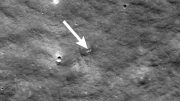
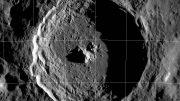
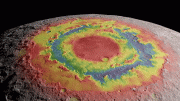

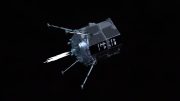
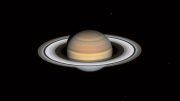

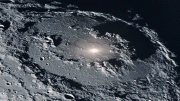
Be the first to comment on "NASA’s Lunar Reconnaissance Orbiter Captures an Image of Earth from the Moon"